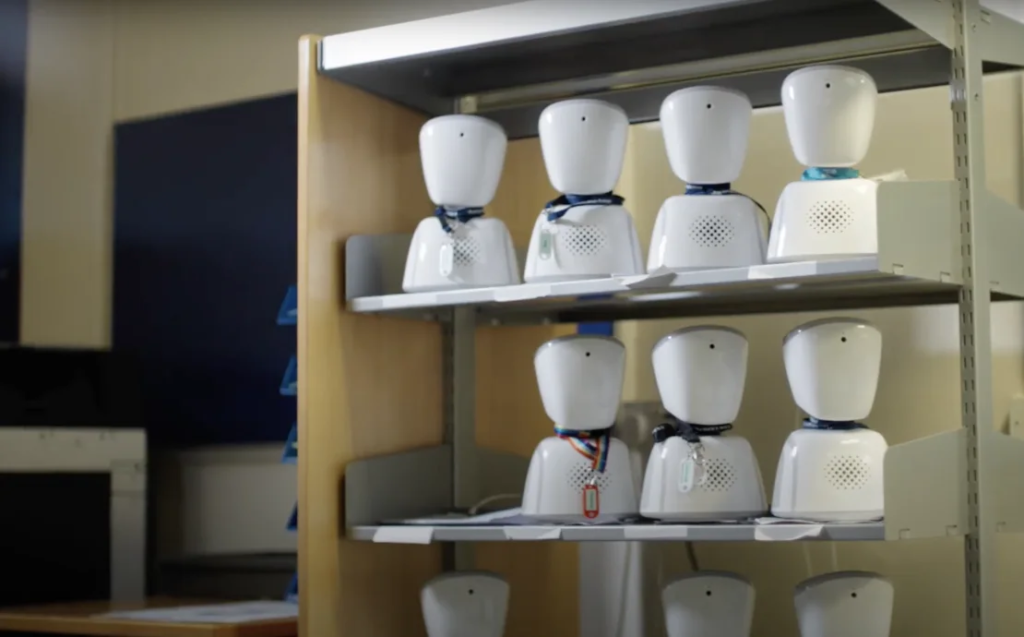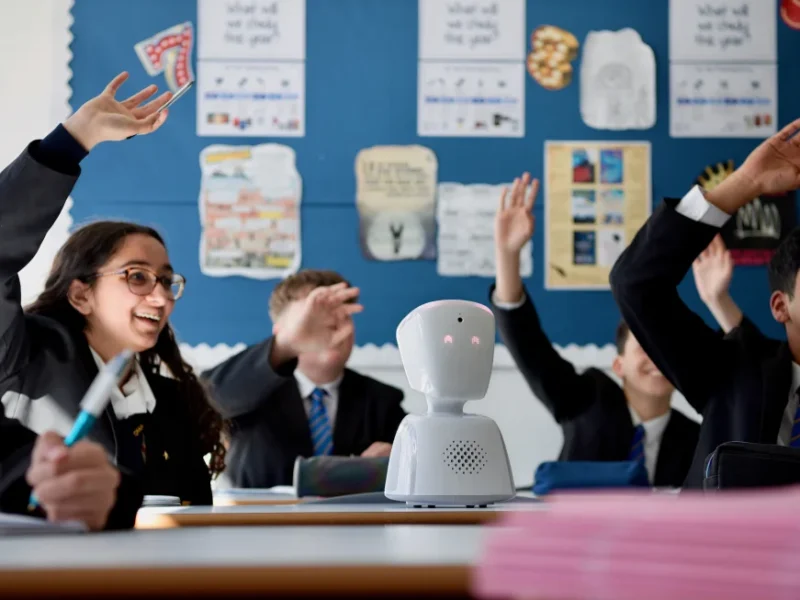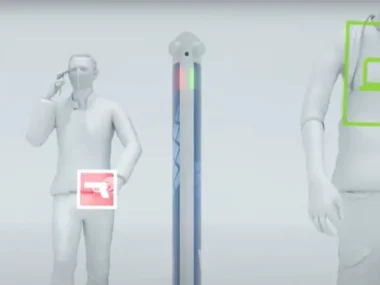When children suffer from chronic illnesses and cannot attend school, the consequences extend beyond their health; the disconnection from their classroom and peers can be challenging as well.
To address this issue, Norwegian company No Isolation created the AV1 robot, which allows a child to participate in class remotely. This robot serves as the child’s eyes, ears, and voice, keeping them engaged with classmates while they undergo long-term treatment or face mental health challenges.
The AV1 resembles a simplified human head and torso, capable of rotating 360 degrees and equipped with a camera, microphone, and speaker. Teachers position it on a desk, and the student controls it remotely via a dedicated app that requires a unique password. “They can tap or swipe on the screen to explore different areas of the classroom,” explained Florence Salisbury, marketing director for No Isolation. The student can communicate with teachers and classmates through the robot’s speaker, and an option to “raise hand” activates a light on the robot’s head. They can also send emojis that appear in the robot’s eyes.
Salisbury noted that there are currently 3,000 active AV1 units across 17 countries, primarily in the UK and Germany, each with over 1,000 units in use.
In the UK, schools can rent the AV1 for approximately £150 ($200) per month or purchase it for £3,700 (around $4,960), plus an annual service package costing £780 (about $1,045).

The AV1 is equipped with a camera, microphone, and speaker.
Salisbury emphasizes that one of the AV1 robot’s greatest advantages is its capacity to sustain social connections. She recounted the experience of a 15-year-old student in Warwickshire, England, whose friends bring the robot to lunch, ensuring he remains part of their social group.
“During a prolonged absence, when classmates might not see their friend for a long time, this connection to school becomes a lifeline for that student, particularly for those with medical conditions,” Salisbury remarked.
Recent government data reveals that over 19% of students in England were consistently absent from school in the autumn of 2023/24, with 7.8% attributed solely to illness, a figure higher than pre-pandemic rates.
Although remote learning became commonplace during the Covid pandemic, many students found it unavailable upon returning to school. The AV1 was introduced prior to the pandemic, but some schools have reported using these robots to assist students struggling to readjust to the classroom setting.
“They Make the Child Feel Valued.”
The Chartwell Cancer Trust in the UK has a fleet of 25 AV1 robots available for children with serious illnesses. Michael Douglas, a founding trustee, shared with CNN that these robots help children remain engaged in their education, even while receiving intensive care. “They are cherished by the parents and truly make a difference,” he stated. “They make the child feel valued.”
However, he acknowledged that there can be administrative hurdles in utilizing the robots, noting that “red tape can be a significant issue” when attempting to introduce the AV1 system in schools or hospitals.
Additionally, some schools may face challenges in maintaining the necessary technical infrastructure for optimal operation, particularly due to weak Wi-Fi connections or mobile signal dead zones.

An AV1 charging station located at Moulsham High School in England.
Technical Training.
In June, a study published in the peer-reviewed journal Frontiers in Digital Health assessed the use of the AV1 in Germany and the OriHime avatar robot in Japan, concluding that these technologies have significant potential to help children maintain social and educational connections.
The research also highlighted the necessity of establishing frameworks to ensure equal access to avatar technologies, emphasizing the importance of training sessions for teachers on both the technical and social aspects of the robots for successful implementation.
In response, No Isolation launched AV1 Academy last August, offering a collection of training materials and resources to enhance the robot’s usability.
According to Salisbury, the AV1 incorporates strong privacy features, including the absence of personal data collection, and the app restricts screenshots and recordings. The livestream is secured through encryption, and only one device can connect at a time, with the robot’s head and eyes illuminating to indicate active use.
While other avatar robots like VGo and Buddy are available on the market, some equipped with wheels for mobility and screens to display the user’s face, Salisbury noted that AV1’s lack of wheels is more practical. Weighing around 1 kilogram, the robot is easily transportable for teachers or students in a custom backpack.
She also pointed out that not having a screen to show the child’s face can be beneficial. “Eliminating the pressure to be on camera has been shown to increase the likelihood of the robot being used by students who experience emotionally based school avoidance,” Salisbury explained.











